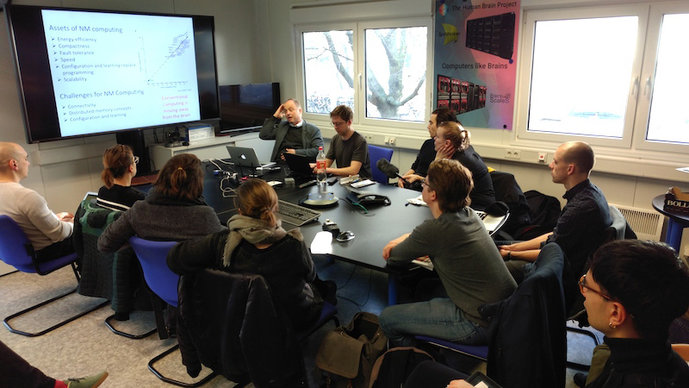

Photo: Lukas Rehm
There is general agreement that the information-handling capabilities of biological networks do not depend upon any specifically vitalistic powers which could not be duplicated by man-made devices.
— Frank Rosenblatt, Principles of Neurodynamics, 1961.
HfG students from the research group KIM visited the research facilities of the Human Brain Project in Heidelberg and the lecture by its co-initiator Prof. Karlheinz Meier. The Human Brain project aims at emulating and understanding the complex organ that is so central to our human existence — the brain. This “thinking machine” is designed according to a new non-digital model of artificial neuron and it will be as big as a four-floor building. If the above-mentioned quote by Frank Rosenblatt (inventor of the first neuromorphic machine of Artificial Intelligence) is valid, the facility that is currently under construction in Heidelberg may be a historical step towards the understanding of our mental processes.
Prof. Karlheinz Meier (†2018) was one of the initiators of the Human Brain Project, former researcher at CERN and chair of the Institute of Experimental Physics in Heidelberg. In his lecture he described different approaches and challenges behind the idea of reverse engineering the human brain.
The excursion was organized by Lukas Rehm within the framework of the course “The Aesthetics of Neural Networks” by Prof. Matteo Pasquinelli at Karlsruhe University of Arts and Design (HfG).